Nestled in the narrow alley at 61 Dinh Tien Hoang Street, opposite Hoan Kiem Lake, is a small pho shop that has stood the test of time for seven decades.
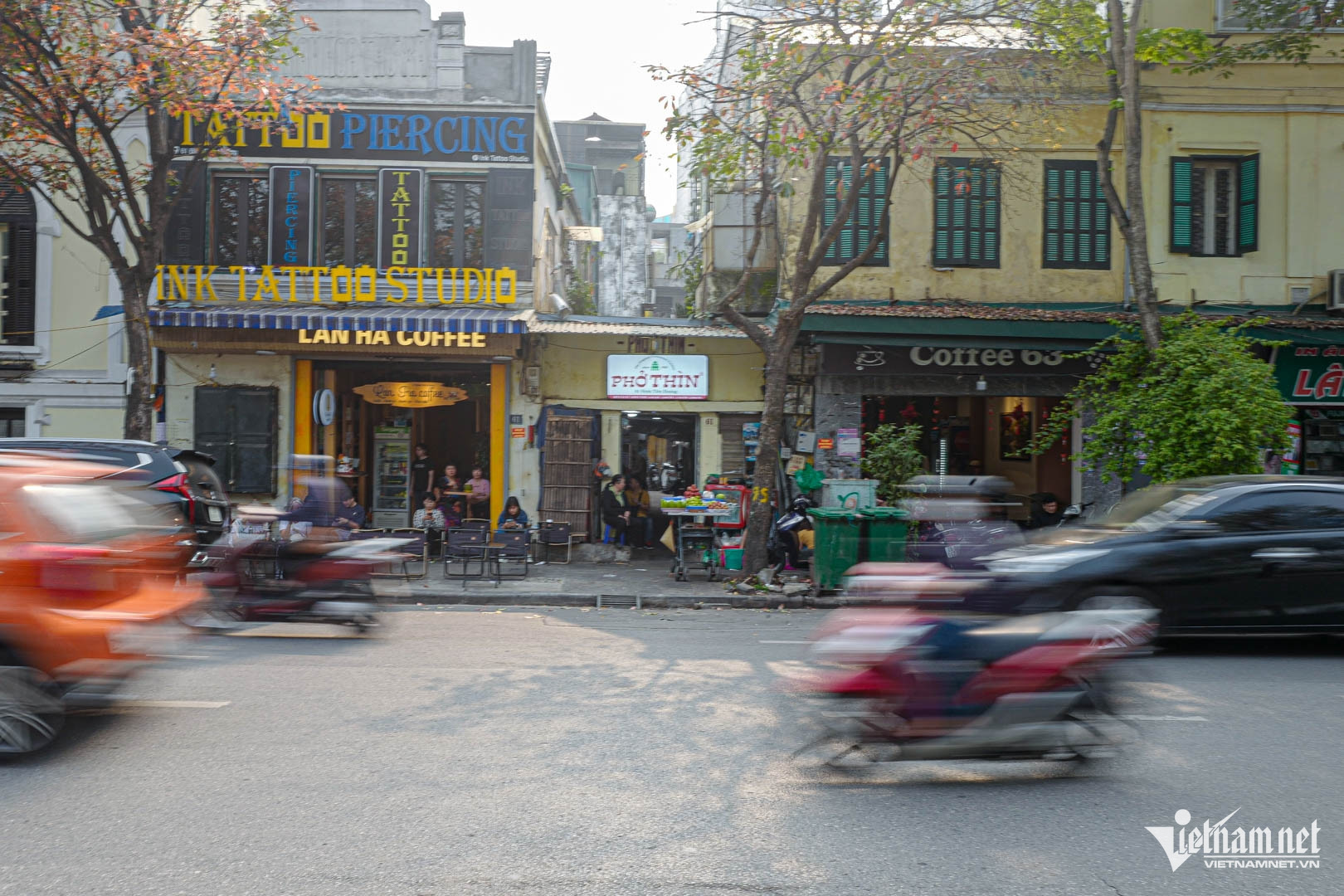
For all those years, the pho shop has remained modestly unchanged - just a few small tables pressed against the old alley wall, a simple kitchen with a never-idle chopping board and knife, a gently bubbling broth pot, a basket brimming with noodles, and trays of brisket, rare beef, and flank.
Customers arrive and sit wherever a spot is free - no private tables for groups. Occasionally, a motorbike will squeeze through the narrow alley, prompting diners to scoot their chairs in. But the local riders are well practiced at weaving through such tight spaces.
If no seats are available, regulars simply pull up a chair at the neighboring iced tea shop or grab a coffee at a nearby café while they wait.
In his memoir Old Stories of Hanoi, writer To Hoai mentioned Pho Thin: “During the U.S. bombing of Hanoi, when the city was nearly silent at night, only Mr. Thin’s pho shop on Hang Dau Street stayed open,” he wrote. “Sometimes, when the air raid sirens wailed, people carried their pho bowls to personal bomb shelters near Hoan Kiem Lake to finish eating.”
Such literary mention reflects the deep connection Pho Thin had with many Hanoi residents, even during the darkest times.
A pho legacy born from hardship

Pho Thin at 61 Dinh Tien Hoang Street was founded in 1955 by Bui Chi Thin (1928–2001). According to his grandson, current owner Bui Chi Thanh, Mr. Thin was from Hoai Duc, formerly part of Ha Tay province (now Hanoi). As a young man, he joined the militia and was imprisoned by the French colonialists at Hoa Lo Prison.
After his release in 1952, he stayed in Hanoi and began working for a relative selling pho from a street vendor’s gánh (carrying pole). Gradually, he learned the trade and started his own pho business.
At first, Mr. Thin carried his pho along a route from Ham Long Street to the Yen Phu water plant. He later settled at “Au Tri Vien” (now Hanoi Children’s Palace) on Ly Thai To Street.
After the capital was liberated, he and his wife, Nguyen Thi Ty, opened a pho shop at the head of their alley to support their family of nine children.
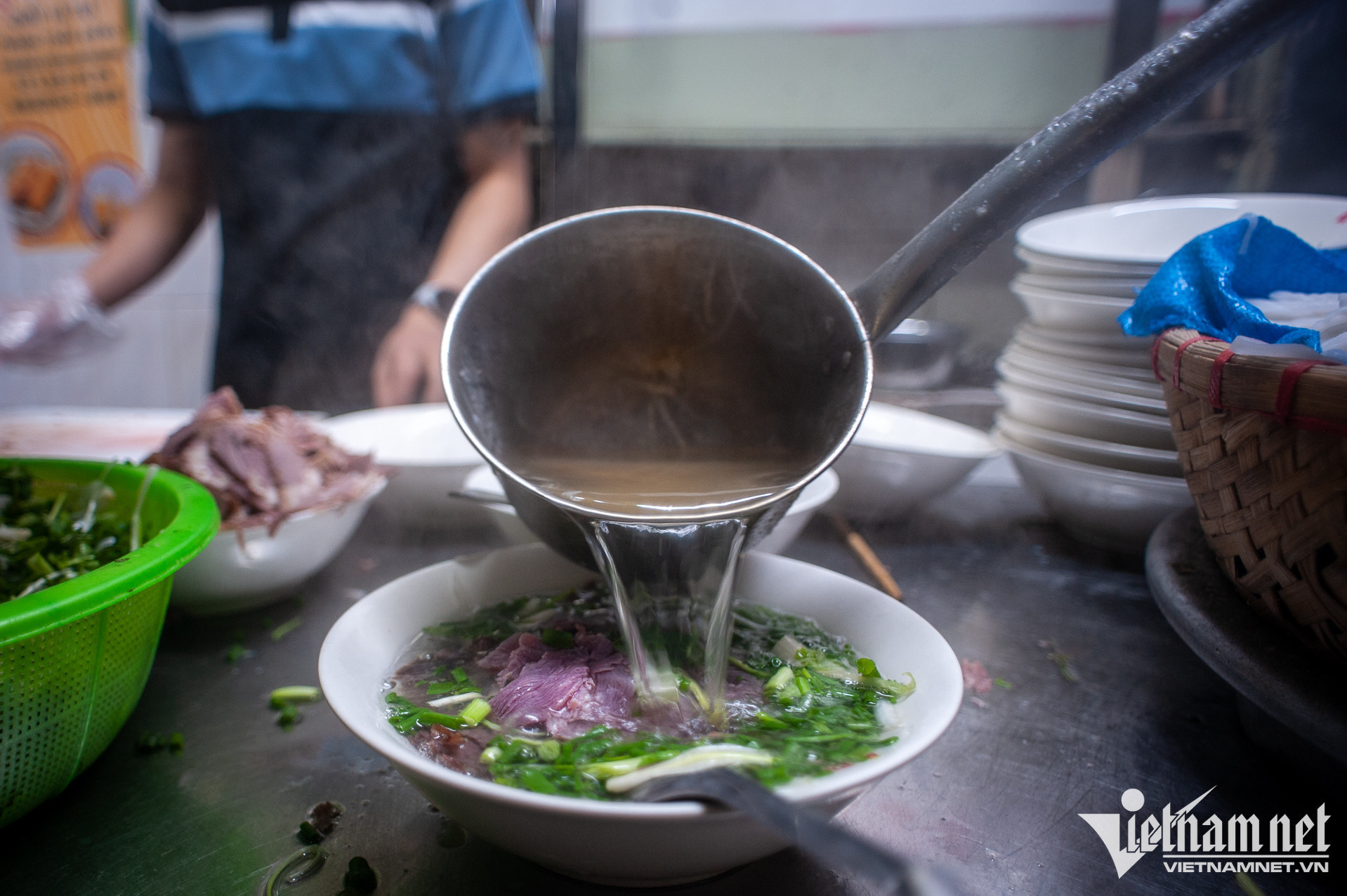
“My father told me that it was incredibly tough back then. They had to carry water from the street. Electricity was unreliable - some days it worked, some days it didn’t. But my grandfather was known for his humor and hospitality. He made pho while quoting verses from The Tale of Kieu or singing folk tunes,” Thanh shared.
His bowls of pho, known for their clear, clean broth free of greasy beef fat, quickly gained a following through word of mouth.
Mr. Thin passed his pho-making craft to his children. “My grandfather had five sons and four daughters. At one point, all five sons ran their own pho shops, and two daughters also had pho businesses,” Thanh recalled.
The original shop at 61 Dinh Tien Hoang was passed down to the eldest son, Bui Chi Hoa (1955–2021), and now to Thanh, the eldest grandson.
“I was born and raised in this alley, beside the never-extinguished coal stove of my grandparents and parents,” Thanh said. “Even when I was five or six, and my grandfather no longer sold pho himself, he would sit in the alley each morning watching my parents cook, chatting with longtime customers.”
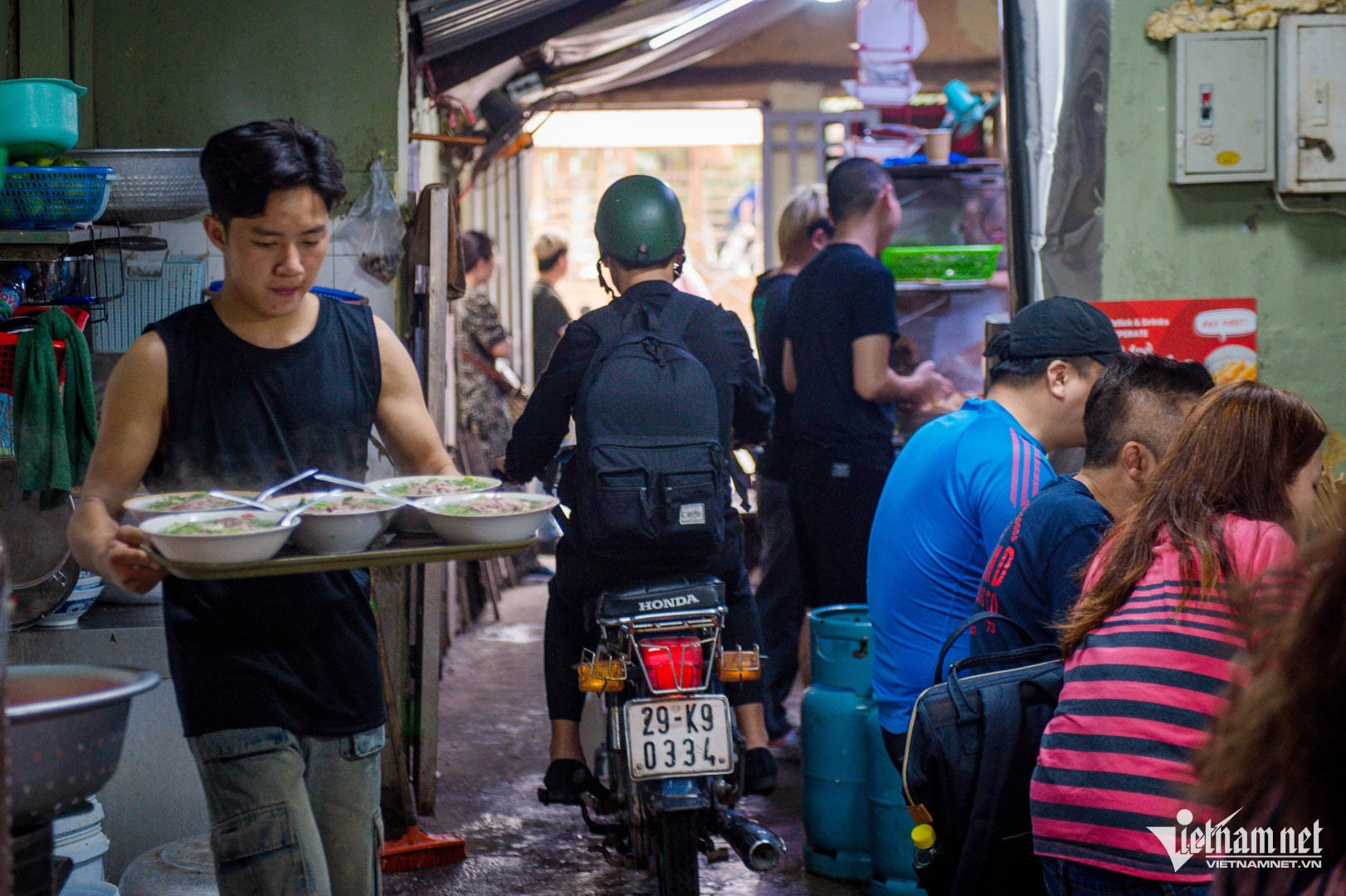
Thanh remembers how his grandfather would ride his bicycle out for surprise inspections of the other family-run pho shops, checking ingredients and techniques to ensure they matched his original standards.
“While the sons ran pho shops, the daughters helped with ingredients like beef and noodles. Our whole family business operated like a closed-loop system, efficiently managed thanks to my grandfather’s forward-thinking mindset,” Thanh said.
Over time, some of Thanh’s uncles and aunts passed away, and others had no one to continue their businesses. Today, besides the original location, family-run Pho Thin branches still operate on Hang Tre, Le Van Huu, Kim Ma, and an upcoming location on Nguyen Van Tuyet.
Preserving tradition with a modern touch
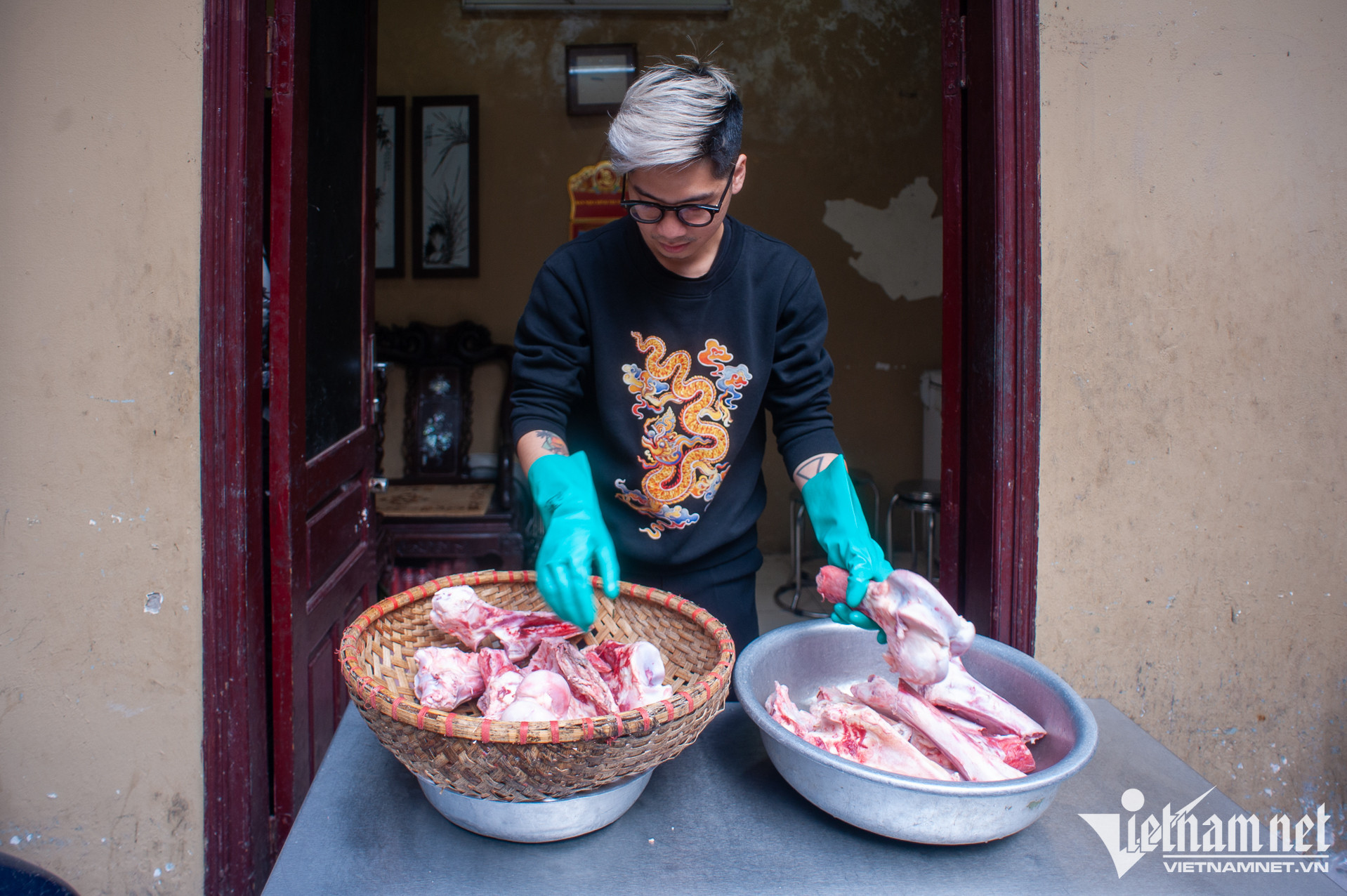
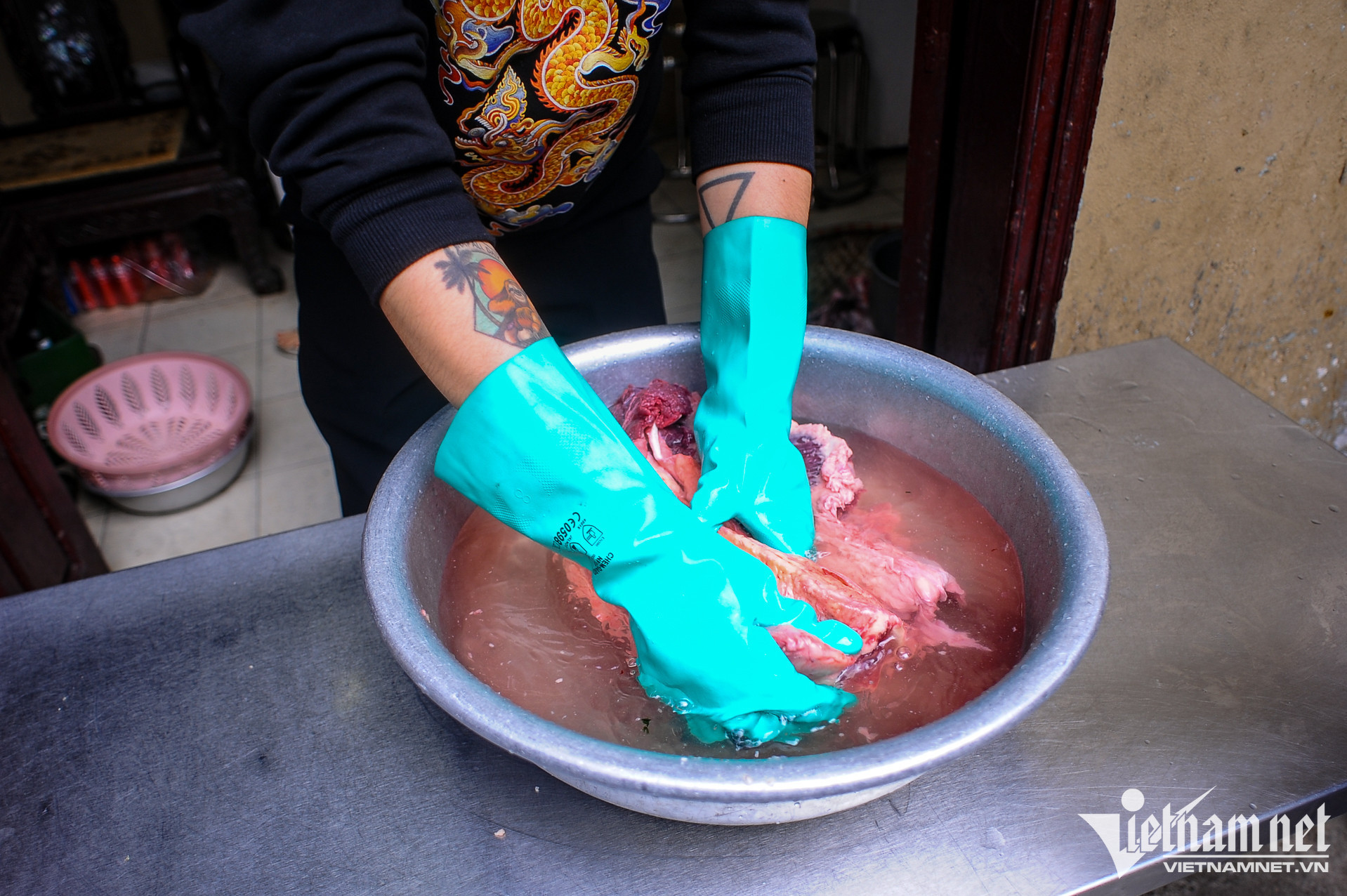
Throughout 70 years, Pho Thin Bo Ho (Pho Thin by the Lake) has served its signature rare beef, brisket, flank pho with a crystal-clear broth.
Growing up in the pho trade, Thanh helped wash dishes and serve customers. Though he studied graphic design in university and ran a coffee shop after graduation, he returned in 2015 when his parents’ health began to decline.
“I already knew the basics from childhood - how to wash tables, cut meat, make broth. So taking over wasn’t too difficult,” he said.
Together with his wife, Ngoc Thu, Thanh gave the shop a facelift, repainting walls darkened by coal smoke and refurbishing the furniture.
“For 60 years, our family used coal to cook the broth. When I married into the family, they handed me a treasured iron poker for the coal stove,” Thu said.
“When Hanoi issued a directive to eliminate coal use, we switched to gas. But Thanh refuses to use electric stoves - only flame allows him to control the cooking exactly as needed.”
Pho Thin still follows the traditional Hanoi pho recipe - no star anise, cinnamon, or fish sauce, only basic spices and ginger.
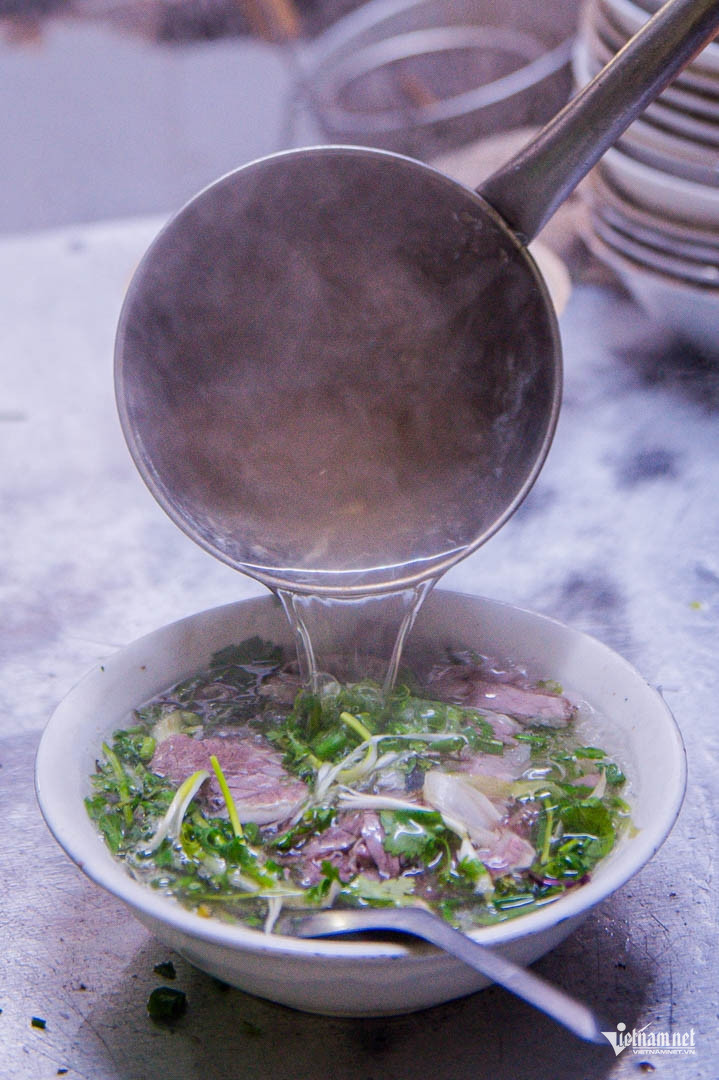
“Depending on the daily amount of bones and meat, I adjust the simmering time accordingly. With experience, I can tell the broth’s strength just by its color or aroma,” Thanh explained.
The shop uses aged but fresh beef, which imparts a richer sweetness to the broth. Cooked beef is sliced on order to retain moisture. Rare beef is softened, finely pressed, and placed in the bowl before being blanched with a ladle of boiling broth to achieve perfect doneness.
The shop is busiest between 8:00 and 9:30 AM, with every seat in the alley filled. As one customer leaves, another arrives. Thanh and a staff member take turns slicing meat. The clatter of chopping, customer calls, and passing motorbikes create a soundscape that is uniquely Pho Thin.
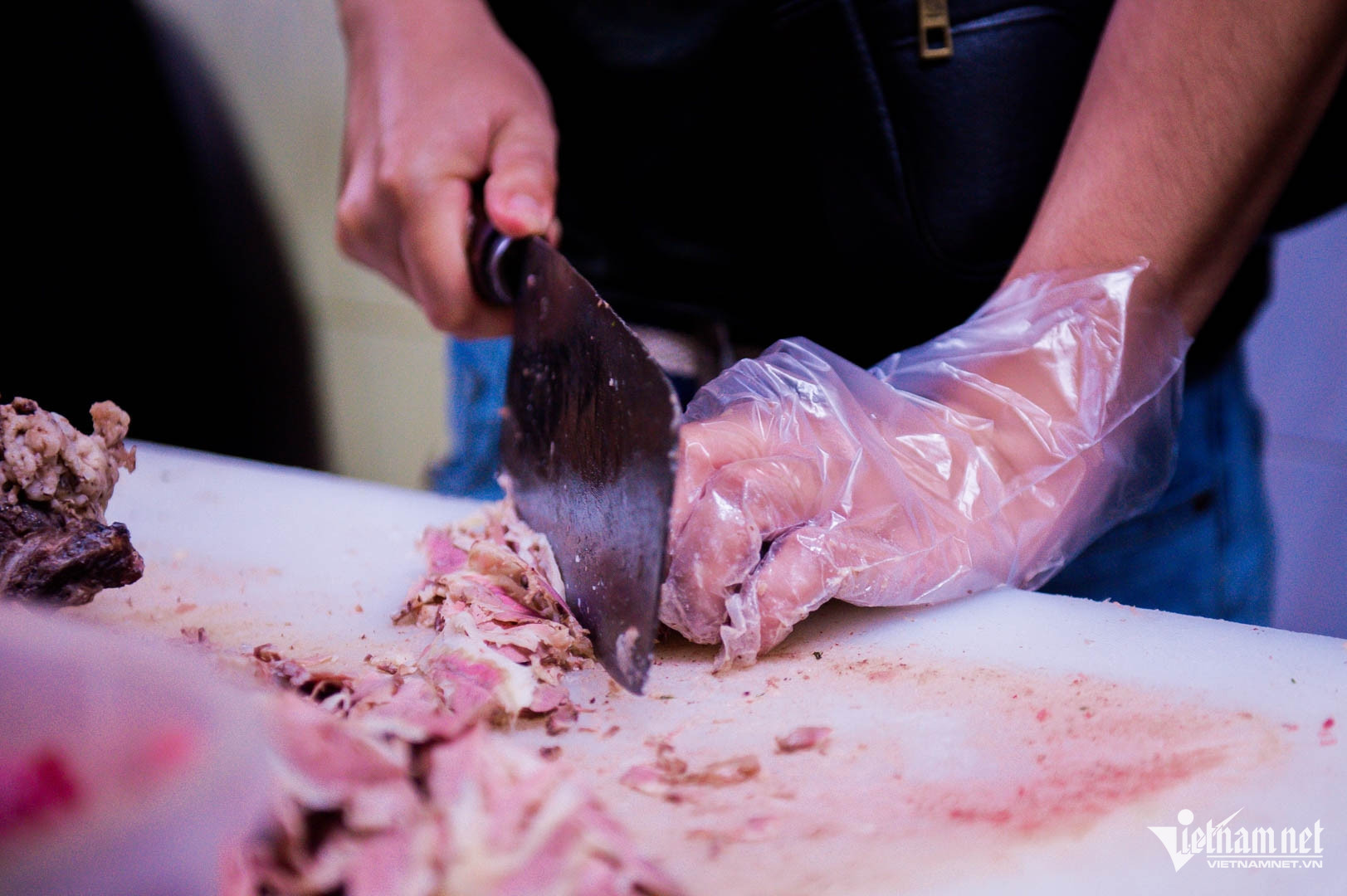
Preserving heritage, even as change looms
In recent years, Pho Thin has received mixed reviews, but its iconic status continues to attract international visitors and media attention.
When Thanh and Thu took over, they modernized marketing with self-designed signage, a website, fanpage, and storytelling around the family’s pho legacy.
“We also signed up for culinary events to share our brand more widely,” Thu said. The effort paid off - Pho Thin Bo Ho now appears at major events.
In 2019, Hanoi’s government selected Pho Thin to prepare 4,000 bowls of pho for the U.S.–North Korea summit, earning praise from foreign journalists.
In late 2023, Pho Thin was featured at “Vietnam Day in France 2023” in Paris. Under the theme “Honoring the past, embracing the future,” Thanh himself served pho to visitors.
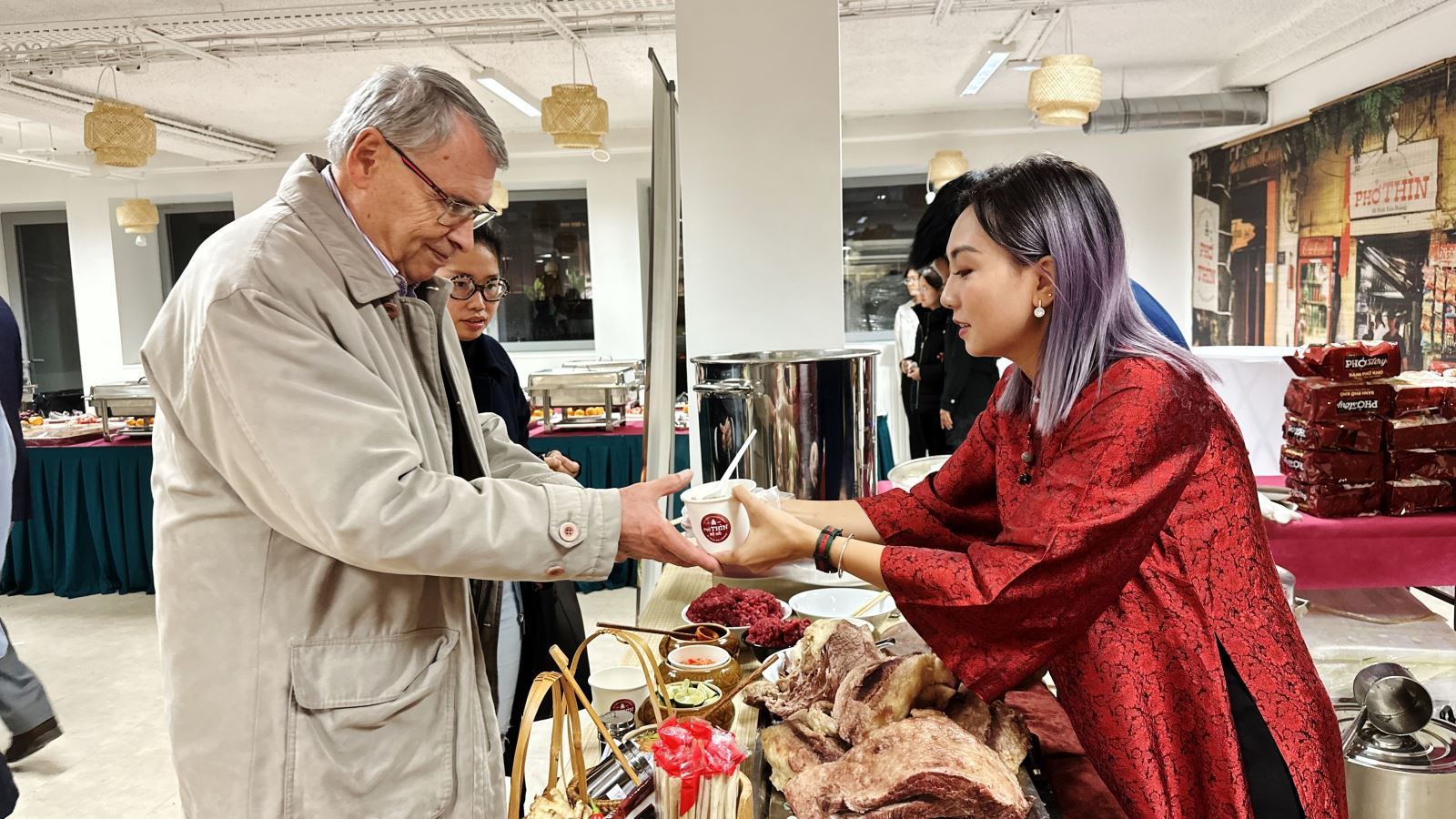
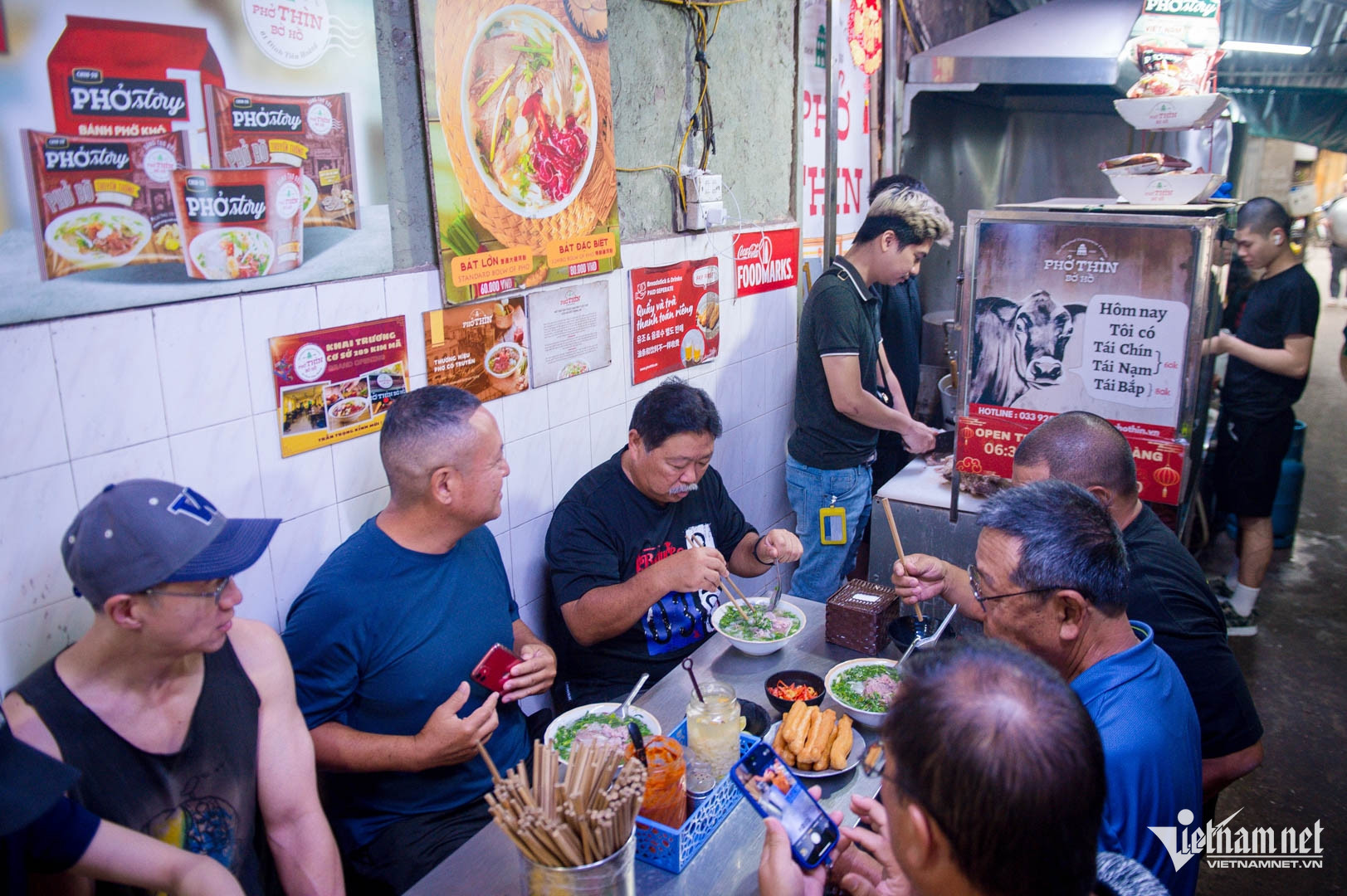
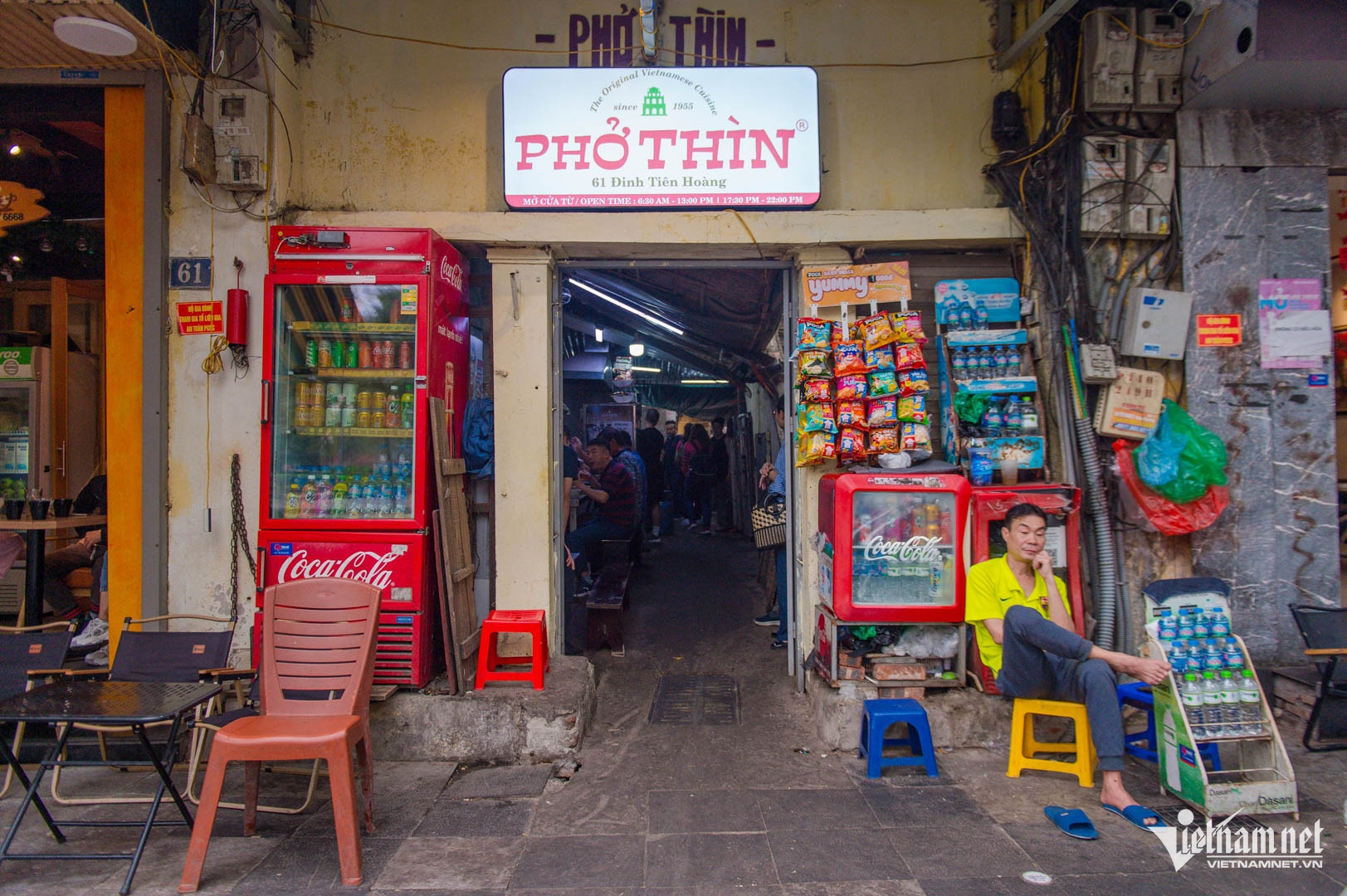
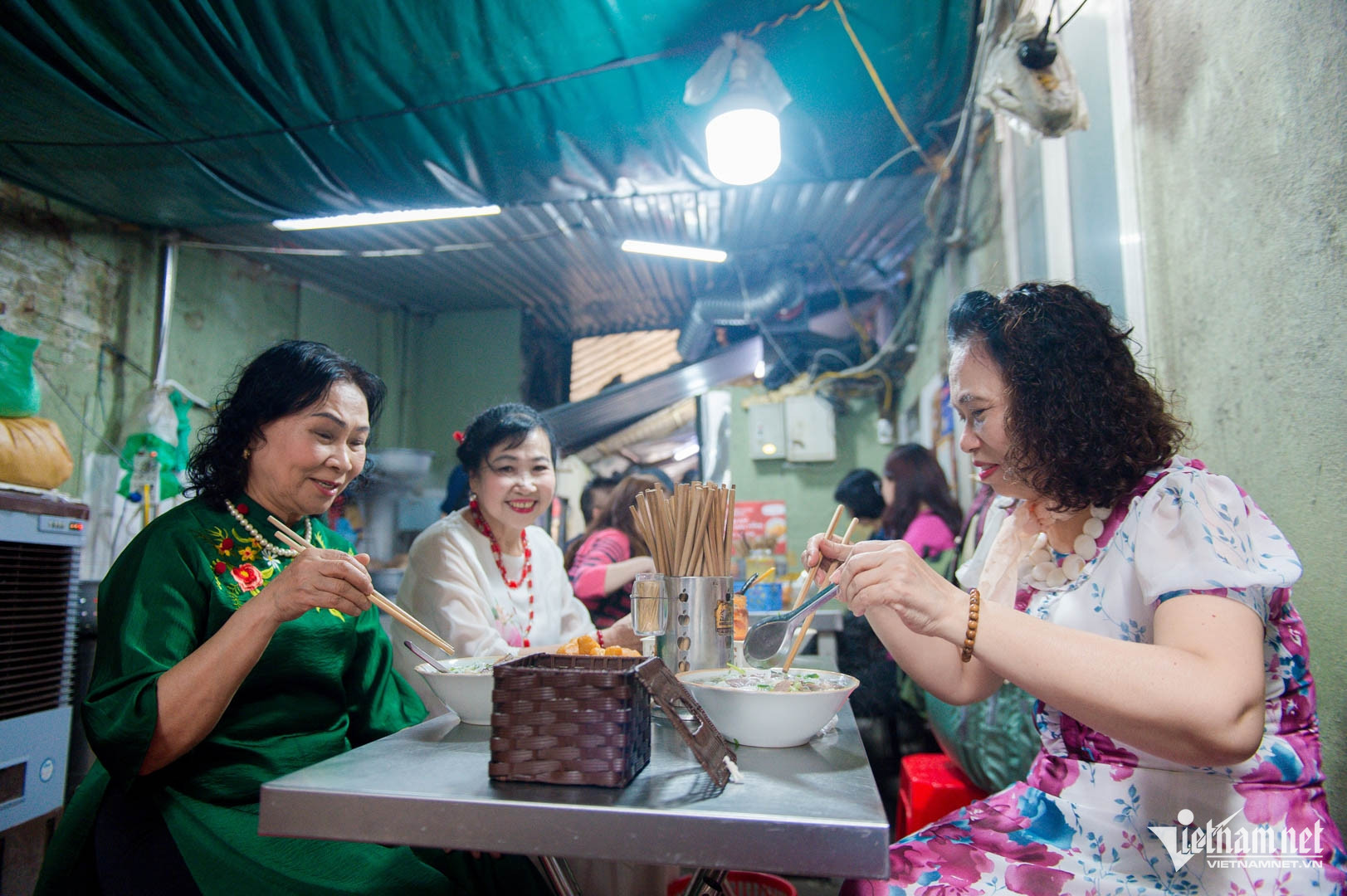
The shop has also been spotlighted by international media, including in In Search of Umami (S1E3: Hanoi - Sauces and Essences) by Channel News Asia, which praised its authentic taste preserved across generations.
Some customers ask why the shop remains tucked in a tiny alley. Thanh answers simply: “This is where it all began. Through the ups and downs of Hanoi’s history, this alley holds three generations’ worth of memories.”
“I want to preserve that nostalgic charm. And for first-time visitors, I hope they find an experience that is both familiar and uniquely Hanoi.”
However, Hanoi has plans to relocate several residences and offices in the eastern Hoan Kiem Lake area to create more public space - meaning Pho Thin’s original location may soon be gone.
“This year, we were planning activities to mark the shop’s 70th anniversary. When we learned of the city’s plan, we were taken aback. We're now looking for a new space and hope to remain near the lake, as we have for the past 70 years,” Thanh shared.
News of the possible closure has prompted a wave of customers eager to enjoy one last bowl.
“We’ve been coming here since we were young - pho was only 15,000–20,000 VND (USD 0.60–0.80) then. Now we’re grandmothers,” said Pham Thi Ngoc Lan from Bac Tu Liem.
“Whenever we’re in town, we still come back to Pho Thin. If it moves from this alley by Hoan Kiem Lake, I’m sure not just me but many others will feel a deep sense of loss.”
“But if the family continues to preserve their pho tradition, people will follow them wherever they go,” she added.
Linh Trang - The Son - Do An